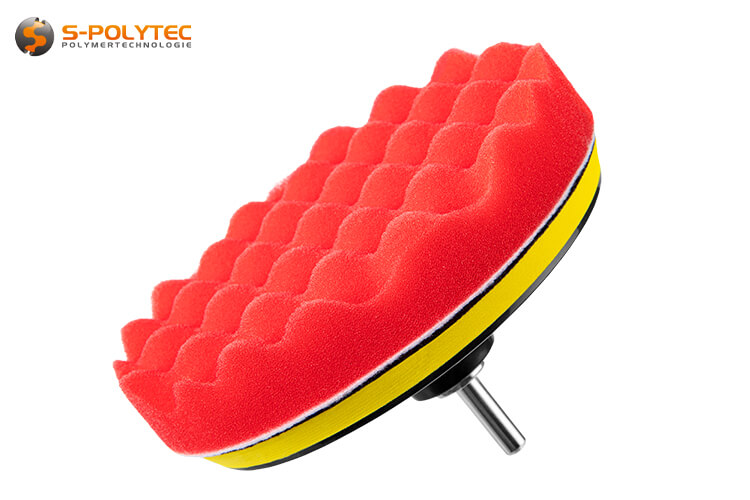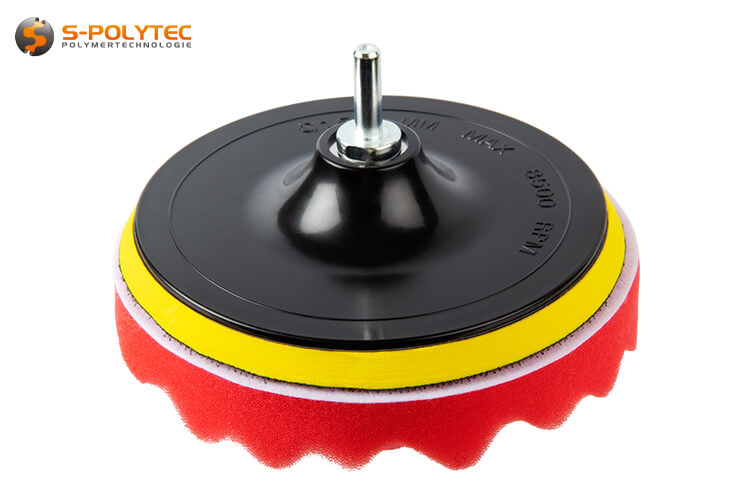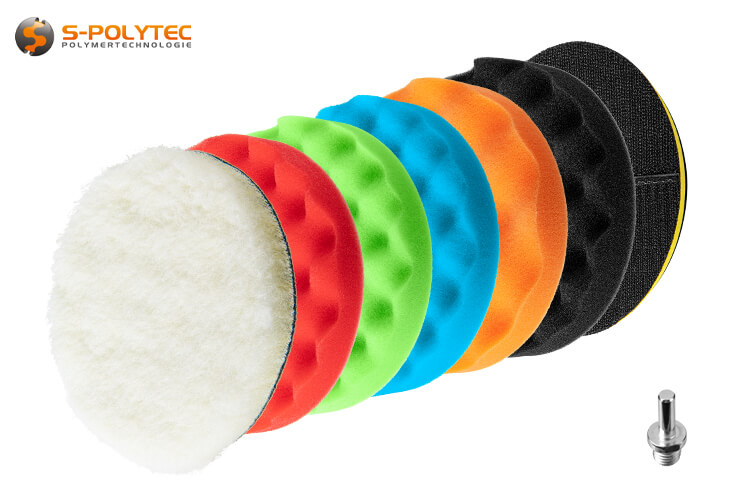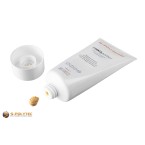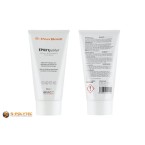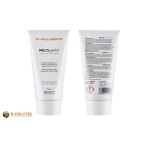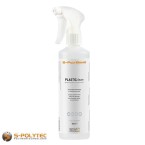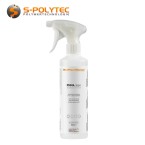
Polishing attachment set (8 pieces)
Our polishing set, consisting of polishing disc, drilling adapter, wool pad and 5 different polishing sponges, is ideal for cleaning and polishing work of all kinds and is suitable for rotary polishing machines as well as for operation with a conventional cordless screwdriver.
✓ For rotary polishing machines
✓ 5 different degrees of hardness
✓ For polishing and cleaning
✓ Also for cordless screwdrivers
✓ Drilling adapter included
✓ With velcro fastener
The different coloured polishing sponges have different strengths from super soft to rough.
The item is in stock
Dispatch within 2 - 3 working days
- calculate the price
€11.90 / pc.
0,2250 kg / pc.
All prices include 19% VAT.
- Description
Polishing set for all kinds of cleaning and polishing work
Different degrees of hardness ✓ Suitable for cordless screwdrivers ✓ Incl. drill adapter ✓
Our polishing attachment set consists of a vibration-damping polishing pad with Ø150mm, a drilling adapter and 6 polishing attachments. These can be attached and replaced very easily via a Velcro fastener attached to the polishing pad. The polishing attachments are a wool pad made of long-fibre, artificial lambskin and five polishing sponges made of foam in different degrees of hardness from rough to super-soft, which have different colours to make them easier to distinguish and, depending on the degree of hardness, are suitable for preparing heavily weathered, scratched surfaces through to high-gloss polishing with a mirror-like shine. This makes our set the perfect choice for all machine polishing work and can be used equally for sanding, polishing and cleaning. The robust plate can be operated both on all commercially available polishing machines or with a cordless screwdriver via the included drill adapter.
Scope of delivery of the polishing attachment set
- 1 x Polishing disc Ø150mm with Velcro fastener and M14 internal thread
- 1 x M14 drill adapter with cylindrical shank
- 1 x wool pad (artificial lambskin)
- 1 x Polishing Sponge Green (super soft)
- 1 x Polishing Sponge Red (Medium Soft)
- 1 x Polishing Sponge Blue (Soft)
- 1 x Polishing Sponge Black (medium)
- 1 x Polishing sponge orange (rough)
Features of the polishing pad and polishing attachments
Our polishing attachment set consists of a polishing plate and six different polishing attachments, which are very easy to attach and remove thanks to a Velcro fastener. With a diameter of 150mm, even the polishing of larger surfaces, such as the doors or the bonnet of a vehicle, is done relatively quickly. The polishing pad is made of a robust plastic with a vibration-damping intermediate layer, which also has the effect of reducing excessive contact pressure during polishing. The internal thread in size M14 is compatible with all conventional rotary polishing machines, but can also be screwed onto the external thread of commercially available angle grinders. Normally, the protective cover must be removed from such devices, which protects against flying sparks when cutting metals. In addition, the tool must be adjustable to a maximum speed of 3000 rpm (RPM). For maximum flexibility, the set also includes a drill adapter that can simply be screwed into the thread of the platter in order to work with a simple cordless screwdriver or drill instead of a polishing machine. However, it should be noted that the impact drilling function must be deactivated. In addition, the speed of screwdrivers and drills must also be limited to a maximum of 3000 revolutions per minute.
The different coloured foam attachments do not serve the purpose of bringing some colour into the workshop, but are intended to help clearly differentiate the degrees of hardness that could otherwise only be guessed at by touch. The bold colours, which are chosen completely differently depending on the manufacturer, are retained even with regular use, provided the attachments are always thoroughly cleaned after use. The distinctive waffle structure, whose structure and size is adapted to the respective degree of hardness, serves to cool the polishing pastes and abrasives to prevent them from drying out too quickly. In addition, the multi-point polishing surface optimally matches the polishing effect to the degree of hardness of the foam. As a result, a comparable polishing effect is achieved in a shorter time. Depending on the degree of weathering, soiling or intensity of surface wear (scratches, matting in places, burnt-in insects or bird droppings, etc.), a multi-stage application with different polishing agents and polishing attachments can make sense. Start with the hardest foam pad to be used and choose a softer one in each subsequent step. The degree of hardness you start with depends on the surface and its condition. The number of working steps and the degree of softness to which you work depends on the desired end result.
Polishing Sponge Orange (Rough)
The orange attachment with the Rau hardness level is the hardest polishing sponge in the polishing set, which has the highest sanding effect and is used in combination with coarser abrasive pastes to sand heavily weathered paintwork and dull surfaces, as well as to level coarser scratches. As a rule, after sanding the surfaces, at least one more operation is carried out to polish out the sanding marks of the coarse paste.Polishing Sponge Black (Medium)
The medium-rough polishing sponge in black is also not suitable for high-gloss polishing. For weathered plastics, tarnished metals, dull, matt surfaces on transparent plastics, the black polishing attachment is very well suited, but always requires polishing agents matched to the application. Moreover, the black attachment can be used for a second pass when the rough sanding work with the rough foam has been completed, in order to approach the desired result step by step. As with the rough polishing sponge, polishing with the black attachment is usually followed by at least one more polishing operation with a softer polishing attachment.Polishing Sponge Blue (Soft)
The blue polishing sponge with a soft foam structure is suitable for all surfaces that are not too weathered and is the hardest attachment suitable for a pure polish without sanding effect. This is perfect for freshening up shiny paintwork and surfaces. An intensely shiny surface with a mirror-smooth finish cannot yet be achieved with the soft foam attachment, but it is a good choice for most applications. The blue polishing attachment is particularly suitable for more sensitive plastic surfaces, such as plastic glazing, window profiles, plastic trim on motorbikes, as well as carbon and epoxy resin coatings. In addition, it can also be used extremely well for cleaning windows and all smooth surfaces with soap solution and achieves a good cleaning effect. However, caution is advised here. Coarse impurities from sand or harder particles can lead to deep, intensive scratching by a polishing sponge.Polishing Sponge Red (Medium Soft)
The medium-soft polishing sponge in red is excellent for fine polishing of shiny surfaces where the shine is to be renewed in a very gentle way. In most cases, the red polishing attachment, provided that an appropriate polishing agent is used, produces an extremely satisfactory result with a good surface shine. This attachment is most suitable for fresh or as-new vehicle paintwork, furniture surfaces with a glossy finish, but also for matt surfaces that only need to be cleaned. The medium-soft polishing sponge is also an excellent choice for thorough cleaning of façade cladding and balcony surrounds, as it cleans the surface gently without creating a significant rubbing effect. For scratch-sensitive surfaces, such as plastic windows of caravans and motor homes, the second softest polishing attachment in the set produces a thorough cleaning effect without leaving microscopic scratches. Instead, such micro-scratches, usually only visible in direct sunlight, which can be caused by regular washing in the car wash or a microfibre cloth, are removed in a very gentle manner.Polishing Sponge Green (Super Soft)
With the super-soft polishing attachment in green, high-gloss surfaces can be achieved. Provided the right polishing agent is used, the very soft, fine-pored foam pad produces an exceptionally good polishing effect. The green polishing attachment is too soft for polishing out scratches, but the very soft structure is extremely suitable for removing holograms, which cannot always be avoided when polishing with less soft attachments, or for applying surface sealants. The super-soft pad can also be used for gentle final cleaning of sensitive surfaces and materials with soap solutions and foam. Abrasive pastes and polishes with coarser grits should no longer be used with this attachment because this is more likely to lead to micro-fine surface scratches that can only be removed by polishing out again in several work steps.The dead sheep
With its long soft synthetic fibres, the wool pad is the perfect choice for high-gloss polishes with very fine polishing bodies. The fibrous material absorbs a lot of the polish, which means that sufficient fresh polishing paste is always distributed over the surface during polishing. With coarse polishing pastes or abrasive pastes, on the other hand, the wool pad is too abrasive, because here, too, much of the paste is absorbed and distributed on the surface. This can have too intensive an abrasive effect, especially on sensitive surfaces, so that we would rather advise the use of polishing sponges made of open-cell foam instead.Grinding and polishing pastes from S-Polybond
- Acrlyglass polishing paste PMMAPolish - especially for polishing and refreshing acrylic & plexiglass surfaces
- Epoxy resin polishing paste EPOXYPolish - especially for polishing epoxy resin coatings with a high gloss effect
- Universal-Polish paste MULTIPolish - Fine-grained polishing paste for glossy and high-gloss surfaces
Cleaning and polishing with the polishing attachment
Before you start polishing, you should take a closer look at the surface and the abrasive paste or polishing agent, because depending on the version or manufacturer, different work steps may be necessary beforehand. In addition, the recommended speeds may vary depending on the product. Whether the polishing compound needs to be additionally moistened, or whether the manufacturer has already included an appropriate additive in the formula to maintain moisture, must also be taken into account. A look at the label or the technical data sheet can be extremely useful here. It is also necessary to clean the surface before the polishing process so that no damage occurs due to dirt adhesion during polishing.
The choice of the appropriate polishing sponge contributes decisively to success or failure. The greater the weathering, the coarser the grain size of the polishing paste and the hardness of the polishing sponge should be selected. Especially in vehicle preparation, but also when removing light surface scratches, several polishing processes with different hard or soft polishing attachments are usually necessary. The polishing agent is also selected with increasingly finer grains from one work step to the next in order to finally achieve a surface with a high-gloss finish. If the polishing attachments are only used to freshen up and intensively clean a surface, for example window profiles made of plastic, only one process with a soft polishing sponge and a cleaning agent with a polishing effect that is matched to the material of the surface is usually necessary.
Before using the polishing sponge for the first time, the entire surface of the selected polishing sponge should be wetted with the polishing agent so that there is no excessive friction on the surface. This reduces rapid heat development and also prevents micro-scratches on the surface. The attachment should then be placed on the surface to be polished so that it is in full contact with the surface. Now you can start polishing. The polishing process should be carried out slowly in a criss-cross pattern and care should be taken not to exert too much pressure on the polishing wheel. In addition, you should always keep an eye on the moisture and consistency of the polishing agent. If it is too dry or the applied film is too thin, this can have a decisive effect on the result.
The surface to be polished should be chosen in such a way that it can easily be polished in one operation. This depends on the amount of polishing agent as well as the temperature of the surface. The warmer the surface, the smaller the area should be that is polished at once, in order to prevent the abrasive and polishing paste from drying too quickly. At regular intervals, the polishing attachment should be cleaned of dried or caked-on adhesions, as these could possibly promote the formation of scratches on sensitive surfaces. A commercially available root or shoe brush is suitable for this purpose. In an emergency, a toothbrush can also help to briefly brush the surface of the polishing sponge.
Repeated application is often necessary. This is particularly common with heavily weathered surfaces, as well as when removing surface scratches, where a coarser abrasive paste and a rough polishing sponge are used in the first step, in order to use an increasingly finer-grained polishing paste with ever softer polishing attachments in the subsequent polishing processes. It is important to ensure that the surface is completely cleaned of polishing residues with a damp cloth before the next polishing process. If the same polishing attachment is used, it should be thoroughly washed out with a finer polishing paste before being used again.
EXPERT TIP: When polishing with polishing and grinding pastes, pay attention to the required moisture content and wet the surface with a little clear water from the spray bottle if necessary. This achieves the best cleaning effect and significantly reduces the formation of fine surface scratches during polishing.
Application examples for polishing
- The polishing disc with the different polishing sponges is ideal for vehicle preparation
- The set is well-suited for working with acrylic glass with our PMMAPolish to remove fine scratches
- Our fine-grained EPOXYPolish can be processed very well with the softer sponges
- To freshen up plastic surfaces, use the soft polishing attachments and our MULTIPolish
- The softer attachments in blue, red and green are perfect for polishing shiny surfaces
- The polishing sponges in orange and black are well suited for cleaning processes with abrasive pastes
- The super soft green attachment can also be used to apply nano sealants
- The fibrous wool pad is ideal for very fine-grained polishes on high-gloss surfaces
WARNING: Even though the polishing pad is suitable for a maximum speed of 8500 rpm (revolutions per minute), when polishing with the polishing attachments, the speed of 3000 rpm should be urgently observed and by no means exceeded in order to avoid excessive heat development. Otherwise the polishing pads or the polishing base may be damaged!
Cleaning and care of the polishing set
Polishing pads should be cleaned after each use so that they are ready for the next use and so that the service life is not limited by dried-on adhesions of polishing agents. To clean the individual polishing attachments, it is sufficient to detach them from the polishing pad and rinse them thoroughly under running water. If necessary, a little cleaner can be used. We do not recommend washing the polishing attachments in the washing machine. The polishing plate can also be cleaned well under running water or wiped with a damp cloth.
To ensure that the wool pad retains its shape during drying and does not shrink during drying, we recommend attaching it to the polishing plate while it is still wet. With the foam polishing sponges, however, there is no risk of changes in shape and size during drying.
- Additional Information
Additional Information
Product-ID PS001 Delivery Time Dispatch within 2 - 3 working days EAN/GTIN 8717729118689 Material Foam, artificial lambskin Weight 0.2250 - Reviews
